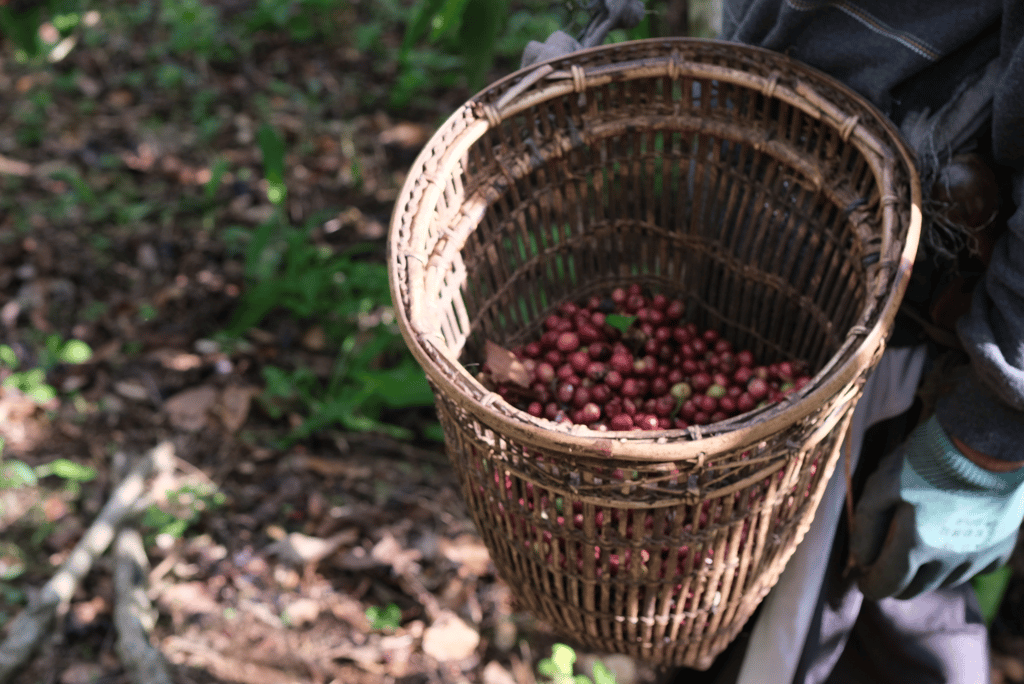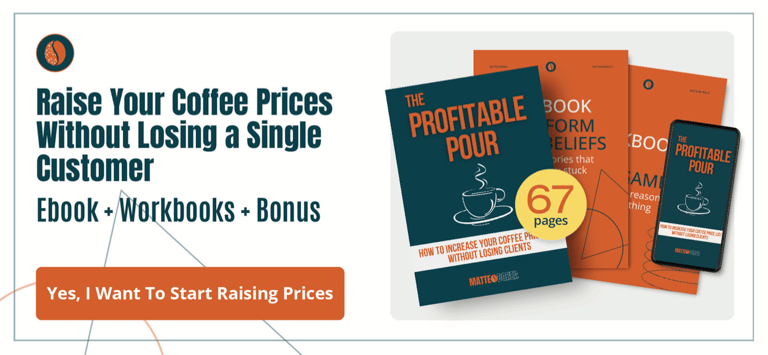💎 DOWNLOAD FREE COFFEE CRISIS SURVIVAL KIT
The U.S. Coffee Market Just Flipped
(And This Is Your Crystal Ball)
COFFEE MARKET
Matteo Borea
10/10/20255 min read
The U.S. coffee shop industry, representing approximately $74.3 billion in revenue in 2025, stands as a significant and dynamic segment within the broader foodservice landscape.
Beautiful number, isn't it? $74.3 billion.
Now let me show you the number they buried in paragraph 47:
Average industry profit margins are slim, estimated by IBISWorld to be around 4-5% of sales, with forecasts suggesting potential further contraction.
4-5% margins. In an industry with coffee prices up 14.5% year-on-year in July, the second-highest annual inflation rate for any CPI category behind eggs.
The math is simple: costs rising faster than prices equals death.
But here's why you should care, no matter where you roast: what happens in the U.S. coffee market today happens in your market tomorrow. Always has. Always will.
The Data That Made Me Rethink My Week
I had planned three consulting calls this week with roasters across different continents. All excited about expansion, new equipment, scaling their operations. Then I saw this data:
U.S. specialty coffee market growth is decelerating markedly, transitioning from a robust expansion phase (estimated 6.9% CAGR 2020-2025) to a period of near-stagnation (projected 1.3% CAGR 2025-2030).
From 6.9% growth to 1.3%.
That's not a slowdown. That's a cliff.
And if you think this is just an American problem, you're about to get blindsided. Market maturity follows the same pattern globally: explosive growth, followed by saturation, followed by consolidation.
The U.S. is simply 2-3 years ahead of everyone else.
The $18 Billion Wake-Up Call
Keurig Dr Pepper has agreed to acquire JDE Peet's for $18 billion.
$18 billion. For a coffee company most consumers can't even name.
Why? Because they saw what's coming:
Market leadership is concentrated, with Starbucks holding a dominant share, yet the overall competitive arena remains highly fragmented.
Fragmented markets facing margin pressure always consolidate. Always.
This isn't happening just in America. JAB Holdings is doing the same thing in Europe. Asian investment groups are circling specialty coffee operations globally.
The pattern is identical everywhere: the big get bigger, the small disappear, the middle gets crushed.
The Asia Factor That Changes Everything
While U.S. growth is slowing to 1.3%, China is exploding at 15%+ annually.
Starbucks reported that it opened stores in more than 1,000 county-level markets in the first fiscal quarter of 2025.
But here's what should keep you awake: China approved 183 Brazilian exporters to ship coffee under a new five-year deal. Luckin Coffee locked in 240,000 tonnes of Brazilian beans for $1.38 billion.
They're not just growing their market. They're locking up supply for everyone else's market.
Whether you're roasting in Seattle, Milan, or Melbourne, you're now competing with Chinese buying power for the same beans.
The Tariff Reality Check
Trump paused most coffee tariffs for 90 days.
90 days. That's your countdown clock—not just for American roasters, but for anyone who sources from regions affected by U.S. trade policy.
Brazilian exporters, Vietnamese suppliers, Colombian farms—they all adjust their global pricing based on U.S. market access. When America sneezes, the global coffee supply chain catches pneumonia.
After speaking with importers across three continents, the message is clear: everyone is stockpiling inventory.
At historic high prices. With compressed margins.
This is how market panics start.
The Gen Z Revolution That's Global
64% of 25-39-year-olds in the U.S. drank specialty coffee in the past week, more than any other age group.
But here's what they didn't tell you:
Gen Z consumers trade third wave for customizable iced beverages.
This isn't an American phenomenon. It's happening in London, Tokyo, São Paulo, and Sydney. The Instagram generation doesn't want your perfectly extracted, single-origin, notes-of-stone-fruit pourover.
They want a venti iced brown sugar oat milk shaken espresso with extra foam and caramel drizzle.
And they'll pay $8 for it. Or €7. Or ¥800.
Your move, coffee purist. Everywhere.
The Three Universal Business Models
Model 1: The Consolidation Leader
Instead of being acquired, become the acquirer. Three struggling roasters in your region could become one strong operation with shared infrastructure, combined purchasing power, and distributed risk.
This works whether you're consolidating coffee shops in Denver, roasteries in Hamburg, or cafes in Melbourne. The economies of scale are universal.
Model 2: The Vertical Integrator
By sourcing green coffee directly and roasting on-site, coffee shops can bypass wholesale markups, reducing coffee costs by up to 50%.
The principle is the same globally, but execution varies:
In Europe: navigate import regulations and food safety certifications
In Asia: leverage proximity to origin countries
In Americas: use trade agreements and established supply chains
Model 3: The Ultra-Premium Positioning
The previous 1977 record for arabica futures, adjusted for inflation, is over $17/lb.
We're at $4.41. Could go to $17.
So position for $17 now, regardless of your currency.
Create the ultra-premium experience. The $100/kg coffee. The $12 cortado. The experience so premium that price becomes irrelevant.
1% of any developed market will pay it. That's all you need.
The Universal Questions You Must Answer
If green coffee doubles in price next year, can you survive?
If a major chain opens next door, do you have a reason to exist?
If younger consumers don't care about coffee tradition, what's your value proposition?
If Asian buyers lock up supply for five years, where's your coffee coming from?
If margins compress to 2%, what's your breakeven volume?
Can't answer these? You're already dead. The market just hasn't buried you yet.
The 67% Prediction (And Why Geography Doesn't Matter)
IBISWorld projects U.S. coffee shops declining from 88,300 in 2020 to 85,800 in 2025.
They're predicting a 3% decline.
I'm predicting 67% ownership change—globally.
Not closures—ownership change. Acquisitions. Consolidations. "Strategic partnerships."
You'll still have the same number of coffee shops and roasteries. They'll just be owned by five companies instead of five thousand.
And if you're not one of those five, you're working for them.
Your Global Survival Checklist
Option 1: Scale Regionally
Acquire 2-3 struggling competitors in your market
Negotiate combined supply deals
Cut overlapping costs
Achieve local scale before global scale becomes mandatory
Option 2: Integrate Vertically
Source direct and roast yourself
Cut coffee costs by 40-50%
Own your story from farm to cup
Build supply security while others panic
Option 3: Go Ultra-Premium
Double your prices immediately
Lose 80% of customers, keep the 20% who value experience
Serve fewer customers at much higher margins
Position for a post-commodity world
Option 4: Exit Strategically
Sell now while there are still buyers
Your business is worth more today than tomorrow
Someone needs your customer base for their expansion
Take the money and invest in the next wave
The Clock Is Universal
71% of Americans report brewing at home at least once daily, compared to just 16% who exclusively rely on cafés.
Similar patterns are emerging globally:
Europeans buying home espresso machines at record rates
Asians investing in premium home brewing equipment
Australians shifting to subscription delivery services
The market is telling you something, regardless of your postal code.
Consumers are cost-conscious. Growth is slowing. Margins are compressing. Giants are consolidating.
This isn't a temporary crisis. This is structural change.
And structural change doesn't care about your local market dynamics, your regional coffee culture, or your traditional customer base.
It only cares about one thing: can you adapt faster than you die?
The answer, for 67% of coffee businesses globally, is no.
For the other 33%?
Welcome to the new global coffee economy. Population: survivors only.


© Matteo Borea - All rights reserved - Z0145324S


